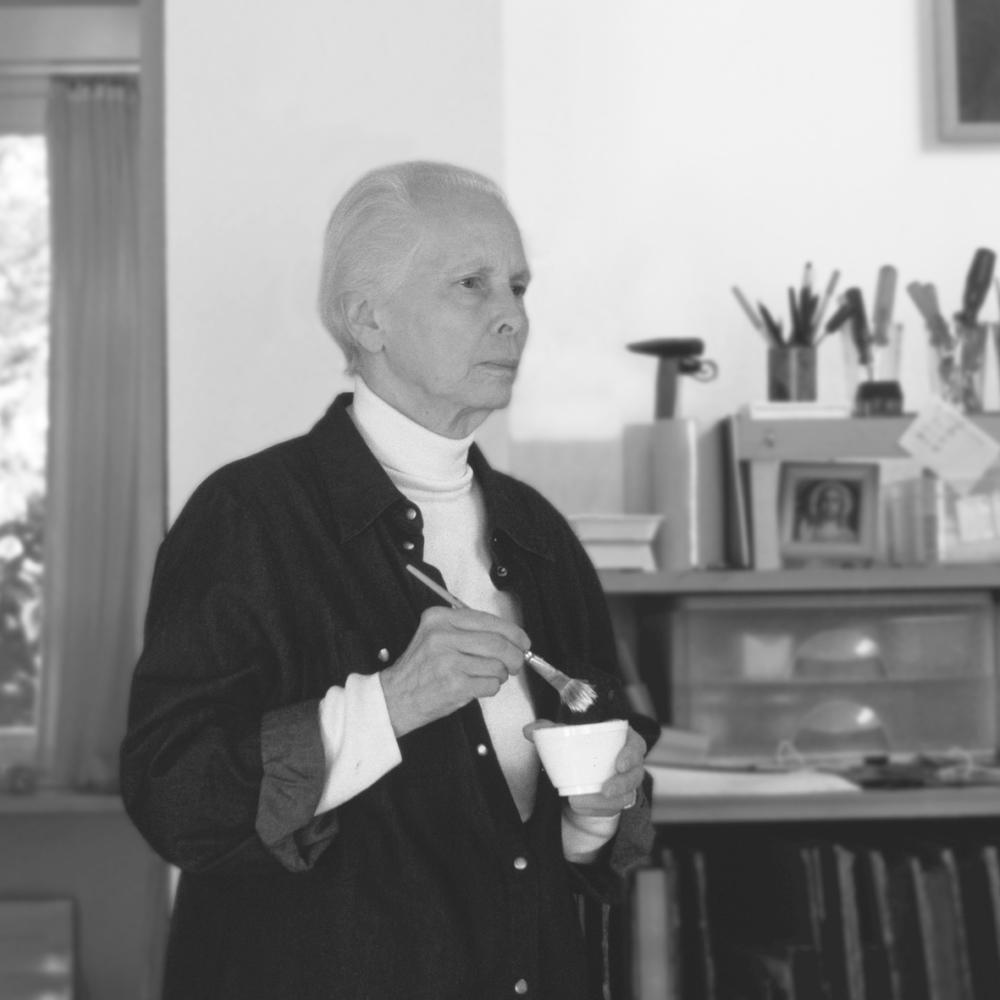Ninetta Sombart
Meeting Ninetta Sombart left a deep impression. She was serious and humorous, open, direct, and sometimes she also seemed reserved. She loved being with children and with people generally. But she also experienced herself as lonely.
Ninetta was born in Berlin (DE) on 2 May 1925. Her father, Werner Sombart (1863 – 1941), was a professor of economics; his first wife, with whom he had four daughters, died in 1920. Two years later he married Corinna Leon, the mother of Ninetta Sombart and her brother Nikolaus who was two years older than her. Through her mother she got to know the Russian-Orthodox Church but was later confirmed in the Protestant Church.
Her gift for drawing first became apparent in grammar school. After graduating she studied architecture and in 1941, after her father’s death, she followed her mother who had been evacuated to Bad Kösen (DE). There she worked in a home for boys with challenging behaviours. When the war was over, she painted soldiers’ portraits, worked as a poster artist and, in 1947, she married the landscape painter Wilhelm Bruckner. The couple moved to the United States and had four children.
In order to earn some money, she painted a picture that led to further commissions and reproductions in the form of art prints. Her pictures in the style of magical realism and surrealism were sought after and she was promoted by Salvador Dalí. In the 1960s a health crisis led her to the Ita Wegman Clinic (CH) and rang in a new chapter of her life.
Spiritual roots
Ninetta Sombart became head of advertising at the Buss Engineering Factory in Pratteln (CH) and managed to also find time for painting. After her retirement in 1987 she worked as an independent artist, developing her own lazure technique with oil and acrylic colours. Again, her pictures became widely sold postcard motifs and art prints.
For Ninetta Sombart truth was more important than beauty in her painting – and sometimes she would paint over one of her pictures. She is best known as a painter of Christian motifs and altarpieces in the Christian Community. The drama she captures in her pictures reflects her interest in current affairs.
She was only twelve years old when she met the later world-famous Romanian conductor Sergiu Celibidache, with whom she spoke about reincarnation and whom she heard say that «When you lie, you become invisible for the spiritual world, your angel becomes powerless and you are left without him.»
Ninetta Sombart liked reading in Rudolf Steiner’s lectures, about religion, art and folktales from all over the world, but she also had cartoons in her library. She was closely connected with the Goetheanum, through exhibitions for instance, and an active member of the branch and the Christian Community.
Appeal Ninetta Sombart’s family is looking for photographs of her privately-owned pictures for an exhibition – please also indicate if you would loan the pictures for the exhibition.
Contact Philip Bruckner, Holbeinstrasse 89, 4051 Basel, Switzerland, philip@bruckner.ch
Book Volker Harlan: Ninetta Sombart. Life and Work, Floris Books 2004, tr. J. Madsen
Work (selection) www.pinterest.ch/helenavdnest/...
Interview Jonathan Stedall interviews Ninetta Sombart, www.youtube.com/watch?v=_8DQd3...
Sources Personal impressions, Peter Bruckner and Rolf Herzog, whose detailed obituary of Ninetta Sombart appeared in Das Goetheanum 7/2019 (in German)

